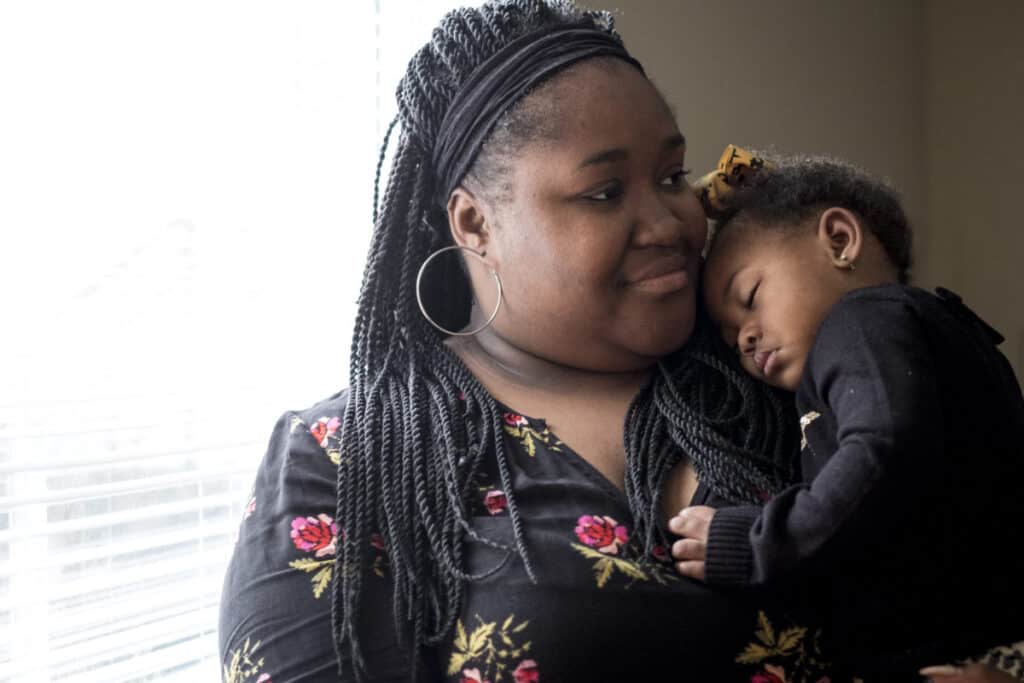Many children have behavior problems at school because they are frustrated or their needs are unmet and they can’t communicate why. This is especially true of kids with disabilities. To make it worse, when children act out at school, they are often punished for their behavior.
For the adult caregivers, this can be hard to manage both at home and at school. But if we can be patient, try to understand what a child needs in that moment, and anticipate what triggers them, we can minimize the frustration for everyone.
Here are some tips to understand why your child is acting up and what you can do to help them.
Identify why your child is having behavior problems at school
The first step is to explore the reasons. Why is your child really acting out? Many children who are frustrated by learning challenges react with what’s seen as bad behavior. There are many possible reasons, but often they involve some kind of emotional pain or low self-esteem. Behavior that may seem manipulative to teachers may simply be a sign that the student needs coping skills.
Common behavior triggers
Your child may be…
- Stressed in school
- Struggling with learning
- Uncomfortable in social situations
- Self-conscious about physical abilities
- Hungry or tired
You don’t know until you ask and explore. Sometimes it could be as simple as needing more sleep or more frequent snacks throughout the day. Look at the big picture: what may be making them unhappy? Children and teens often don’t know why they are feeling or acting in a certain way. It may take some detective work, but it will be worthwhile to search for the real underlying reasons.
If your child is not interested or engaged, or does not participate in school activities, this can also be a red flag. Talk to the school counselor if you’re worried about your child’s emotional state.
How to learn more about what’s going on for your child:
- Ask the teacher when these behaviors happen. Is it during certain kinds of activities or times of day? Look for patterns that can give you a clue
- Talk to your child if possible. Ask about their emotional state: are they uncomfortable, frustrated, or stressed about anything?
- Check with the doctor to rule out medical causes. It could be that your child needs glasses or has trouble hearing, or that their sensory needs are not being met during the day
- See if they may have trouble with certain academic skills. They may have a learning disability or developmental disability
- See if they struggle with physical skills like holding a pencil or catching a ball. It may be that they need occupational therapy
- If they are already getting special education services or accommodations, make sure these are being done consistently. Or maybe you need a team meeting to adjust the services and interventions
- Talk to your child’s therapist, if they have one
What can the school do to help?
Schools have processes to help support students who have frequent behavior challenges. Here are some things they can do:
- Assess your child’s needs for different learning strategies
- Put in place some different teaching strategies or interventions
- Change some aspects of the classroom setting or schedule (accommodations)
- Have your child work with the school counselor
- Do a formal assessment called an FBA: Functional Behavior Assessment.
- Create a formal Behavior Plan based on the results of the FBA
If your child has an IEP, you could add some behavior-related goals. Also make sure the services and accommodations are happening consistently. Talk to the IEP team.
If your child does not have an IEP, you can still ask for an FBA (Functional Behavior Assessment) and make a Behavior Plan. Talk to your child’s teacher and ask to meet with the school psychologist.
The U.S. Department of Education has issued guidance for schools to avoid using unnecessary discipline to discriminate against students with disabilities.
Be careful about setting behavior goals:
The purpose of behavior plans should be to help your child learn ways to communicate their needs and manage the discomfort and frustration that leads to the “behaviors”. For example, a child can learn to recognize when their feelings are ramping up, and ask for a break to get them out of the situation before they act up. Everyone on the IEP team should understand that this discomfort and frustration affects them more than other students because of their disability.
Behavior plans should NOT be the first or only solution. The most important solution is always to try to understand why the child is acting the way they are, and helping to minimize the causes. If a child’s needs are truly met, they rarely act up.
Behavior plans should NOT be ways to have your child conform to traditional norms of “neurotypical” students (those without a developmental disability). For example, say a child is rocking back and forth, flapping their arms or using an object as a fidget. This is probably their way of staying calm and grounded, and should not be discouraged. In fact, a good behavior plan may involve seeking a fidget when they need one, or using headphones or going to a quiet corner during activities that may cause sensory overload. If the child’s movements are distracting to other children, that can often be managed in the classroom without squashing the child’s behavior.
Too often, Black and Brown students are labeled “behavior problems” and end up getting an FBA and a behavior plan, but no one is talking to them or their parents about what’s going on. Unfortunately, the staff’s perception of the child’s behavior is often different than it might be for a white child. The FBA itself could also be biased in the way it assesses their actions. (See this research study on racial bias in FBAs, and this guidance to help special ed evaluators reduce bias.)
FBA: Functional Behavior Assessment
An FBA is an assessment of a child’s behavior in school. It is a tool to identify the underlying reasons why they act out and the first step in finding solutions.
Who does the FBA?
The FBA should be led by a professional like a school psychologist or behavior specialist. But the teachers, parents, and other specialists (like therapists) will give their feedback.
What does it look at?
An FBA is an assessment tool to explore a child’s problem behaviors. It looks at what may be causing or leading up to the behaviors, and what kinds of strategies help to minimize them. An FBA should also look at positive behaviors to see what encourages them!
The evaluators will look at these things:
- What behaviors are having a negative impact?
- When do they happen? In what settings or situations?
- What are the underlying reasons for them?
- What positive behaviors can we teach and encourage?
- What strategies can encourage healthier behaviors?
The evaluators should talk to the parents or caregivers to get your thoughts and see if there is anything going on at home that may be easing or contributing to what’s happening in school. If they don’t ask about possible underlying reasons for your child’s behavior, talk to them about it! Schools sometimes gloss over these reasons and make assumptions about why a child is acting up. They should examine all the reasons below the surface.
How can I request an FBA?
If you have concerns about your child’s behavior, you have the right to request an FBA. You can ask for this whether your child already has an IEP or not.
Ask the teacher (or IEP team) to plan an assessment. Put it in writing, with a date, and keep a copy for yourself.
If you have trouble, send a copy of the request to the school district’s Office of Special Education. Sometimes this office has a different name, like Exceptional Student Services, or Office of Student Services.
What’s next?
After the FBA is done, the school should send you a copy. It will have recommendations on what you and the school can do.
Set up a team meeting to see if you need to make changes or additions to the IEP, or write up a Behavior Plan. (Sometimes called a BIP: Behavior Intervention Plan.)
Behavior-related IEP goals
If your child has trouble with their behavior at school, you can write goals into the IEP to address the behaviors.
Here are some tips and examples:
- If you have not done an FBA, it can help to get one. You can add goals to the IEP even if you haven’t done this, but an FBA can help to understand the pattern of behaviors and reasons behind them. This can help you write more effective goals
- Make sure the goals relate to your child’s specific needs and habits and are written in a positive way. For example:
- Yes: Maria will ask for a break if she needs one…
- No: Maria will stop hitting her classmates…
- The real goals, of course, will be more specific and include ways to measure the goal. (For example: in 4 out of 5 times… Read more about writing IEP goals.)
- The goals can relate to things like keeping calm, using their body safely, asking for breaks when they need them, or following rules or instructions
Read more examples of behavior-related goals
What if we’ve already signed the IEP and the behavior problems are new?
Remember you can ask for a team meeting anytime. If your child’s behavior is just starting to be a problem, ask for a meeting. You may want to suggest they do an FBA first and then discuss it at the meeting.
Discipline and suspensions: What if they send my child home?
Children’s behavior in school is often misunderstood.
As a result, students with disabilities may get punished for acting up, when what they really need is more support. Schools sometimes send a child home in the middle of the day or suspend them because of their behavior, when the behavior is actually because their disability-related needs are not being met.
You may have to push back and not pick your child up every time the school asks them to. This will be hard to do, but the school is required to teach your child! Many students with disabilities lose too many days of school because of this practice.
Sometimes schools might tell you that you need to pick up your child for a “therapeutic break” or “a day off.” This can be code for sending them home without officially suspending them, which means they are not accountable for the child missing another school day.
If your child is getting repeated suspensions, you have to help the school understand the reasons behind the behavior and push the school to address those reasons instead of suspending your child. This may be a good time to look for an Education Advocate.
What you can do:
- Keep track of your child’s emotional health and how they feel about different parts of the school day. Give them the language and skills to express themselves in positive ways when they’re frustrated
- Talk to the IEP team and the school principal. Make sure they understand how your child’s disability affects their behavior. Do this at the beginning of each school year!
- Agree on a plan of what to do to calm your child if they act up. Make sure the school does not have a policy of calling the police. This is rare but happens sometimes. It is NOT an appropriate way to respond. (See IDEA’s exact regulations on school discipline and this article on police in schools)
- Have the school do an FBA (Functional Behavior Assessment) and try to understand the reasons and triggers for the behavior. Agree on a Behavior Plan and include it in the IEP.
Children of color and discipline
Sadly, Black and Brown students are punished in school significantly more than white students, starting as early as preschool. This is a result of racism that is so ingrained in our society that most teachers don’t realize they’re treating children of color differently from white children.
Children with disabilities are already suspended or expelled from school due to behavior at higher rates than non-disabled students. So if your child is both disabled and a person of color, it’s something to watch out for.
What if your child is suspended, expelled, or disciplined more harshly than other students and you suspect it’s because of their race, ethnicity, gender identity, or disability?
- Talk to the teacher about how your child’s disability affects their behavior, and address how to understand and support them better
- If that doesn’t help, talk to the school principal about the unequal treatment. Frame it as a “civil rights violation” and be firm that they must find other ways to provide an environment in which your child can learn. After the principal, you can talk to the district or state Department of Special Education or Student Services
- Schedule an IEP team meeting to discuss it and find solutions
- If the situation continues after several meetings with the school, you can also file a complaint with the U.S. Department of Education’s Office of Civil Rights
It’s not easy, and can be downright scary to call out this treatment when we see it happening. Many parents fear that the school may punish them in some way, and indeed this does happen. One strategy is to talk to the state Department of Education, and tell them you want to make an anonymous complaint. If the situation with the school becomes too toxic, it may be better to find another placement for your child. Ask your district if there is a “hardship” appeals process. This may make it more likely that they approve a transfer to a new school.
Learn more about solving disagreements with the school.
As you can see, any child having behavior problems at school is a child who needs to be better understood. You can help if you find out the “why”, keep your sense of compassion, and work with the school to adjust the way they respond to your child’s behavior.
Learn more:
- Is it behavior or is it a learning challenge?
- How can co-regulation help my child’s behavior? Strategies for parenting children with disabilities
- Blog, written by an autistic adult who advises parents: Anxiety Looks like Anger
- See this FBA Template with Guiding Questions. It is meant for evaluators, but it can give you a detailed idea of what they do
- An Overview of Exclusionary Discipline Practices in Public Schools
- Placement and School Discipline
- IDEA’s regulations on school discipline
- See the Louisiana Resource Directory to find Education Advocates and other support in your community



